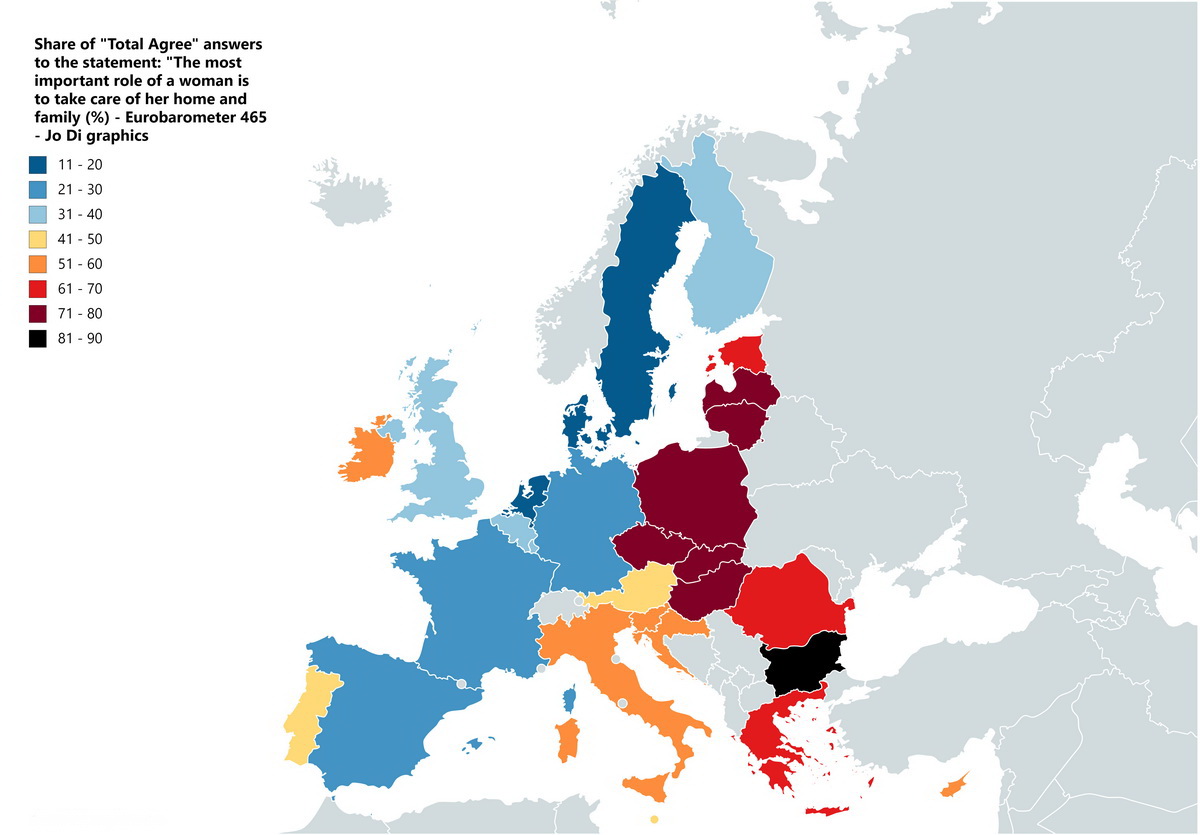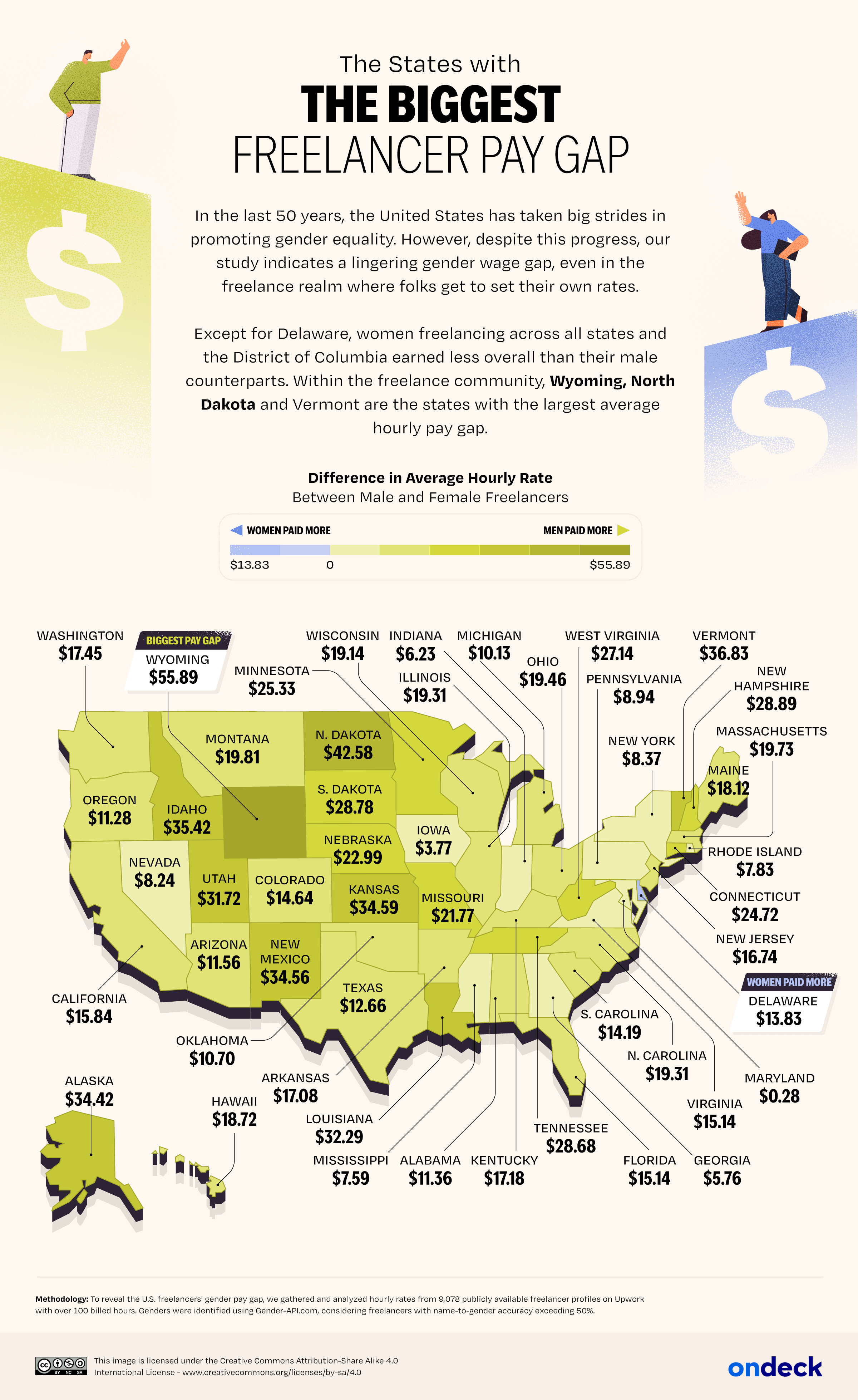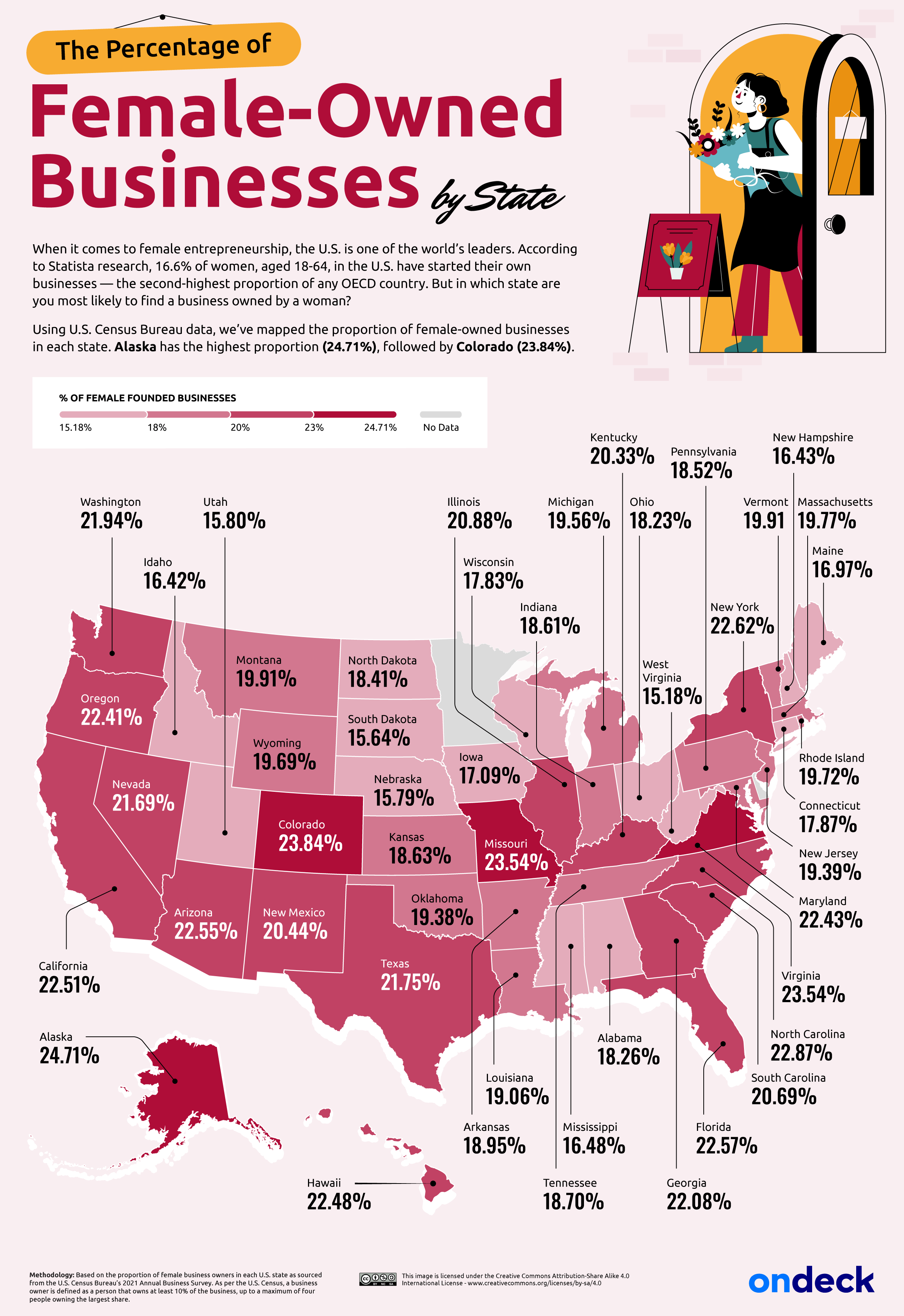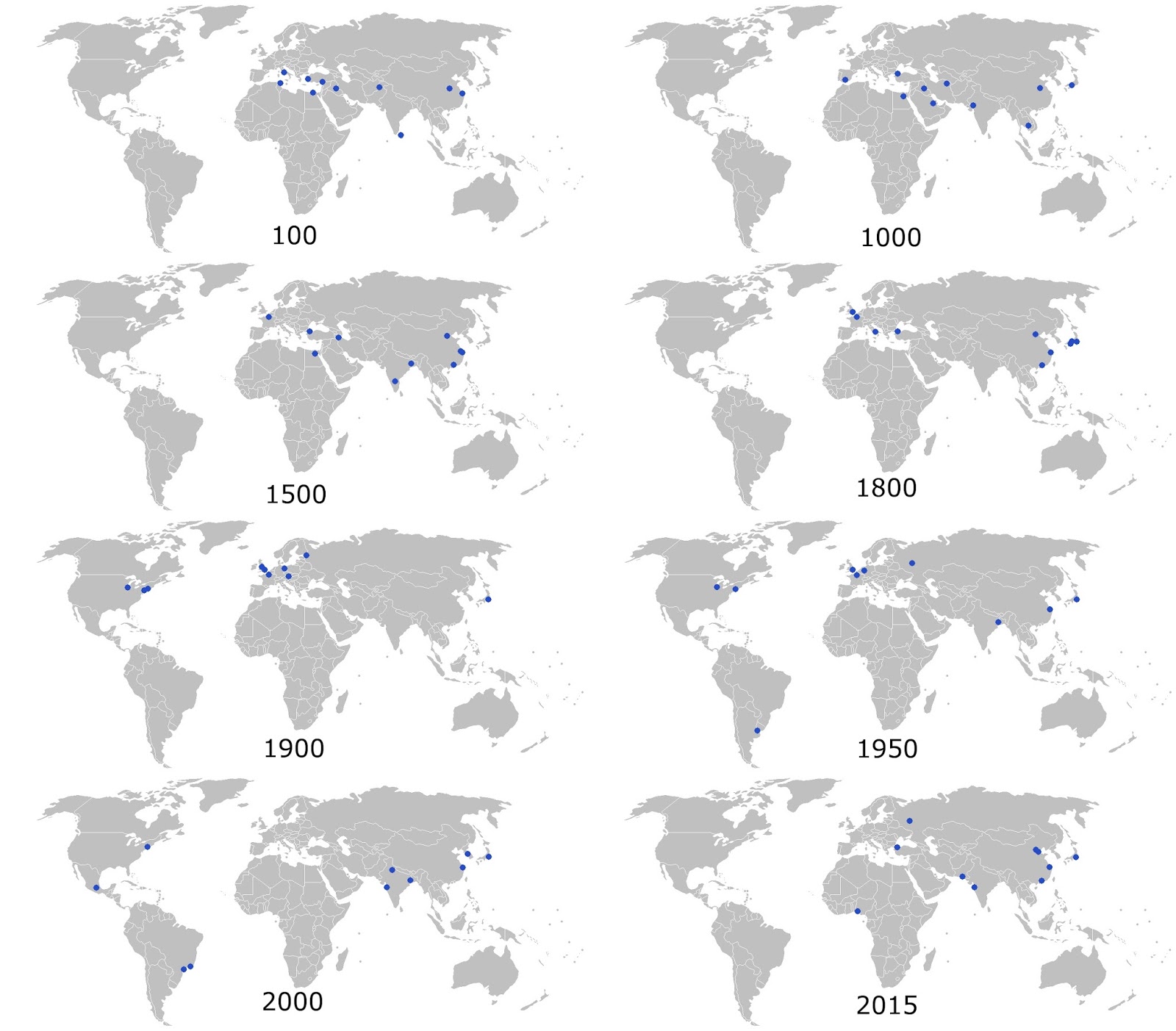What do Europeans think of the role of a woman in their country?

This map, created by Jo Di Graphics using data from Eurobarometer, highlights fascinating regional differences in attitudes toward women’s roles across Europe. It reveals a divide between more progressive and more traditional views that often align with historical, cultural, and religious influences.
Regional Trends in Gender Attitudes
Progressive Views in Western and Northern Europe
Western and Northern European nations, especially those with Protestant traditions, tend to hold more progressive views. For example, in the Netherlands, Denmark, and Sweden—countries often ranked highly on gender equality indices—a smaller percentage of respondents agree that a woman’s primary role is domestic. This aligns with these nations’ long-standing policies supporting gender equality in work and family life.
Traditional Views in Eastern and Southern Europe
In contrast, many Eastern and Southern European countries, particularly in the Balkans and those with strong Catholic or Orthodox Christian influences, maintain more traditional perspectives. Bulgaria has the highest share of respondents agreeing with the statement, with similar sentiments observed in Poland, Hungary, and Slovakia. According to the map, traditional views are more prevalent in countries where religion is an essential part of daily life.
For example, in countries like Portugal, where about 70% of people say religion is important, attitudes reflect a stronger adherence to traditional gender roles. Similarly, Ireland and Austria, where religion plays a significant role for over 50% of the populace, also exhibit these tendencies.
The Cultural and Historical Context
The differences in attitudes are rooted in the historical and cultural evolution of gender roles in each region. Northern Europe’s progressive stance can be traced to early feminist movements and policies like paid parental leave and gender quotas. Meanwhile, in many Eastern European countries, traditional roles have been reinforced by societal norms and limited policy support for gender equality in the workplace.
The interplay between religion, policy, and historical context makes these patterns particularly intriguing. For instance, while Catholicism traditionally emphasizes family values, Protestant countries have historically been more open to gender equality reforms.
What stands out to you about this map? Does it align with your expectations of how attitudes toward gender roles vary across Europe? Share your thoughts in the comments below!








